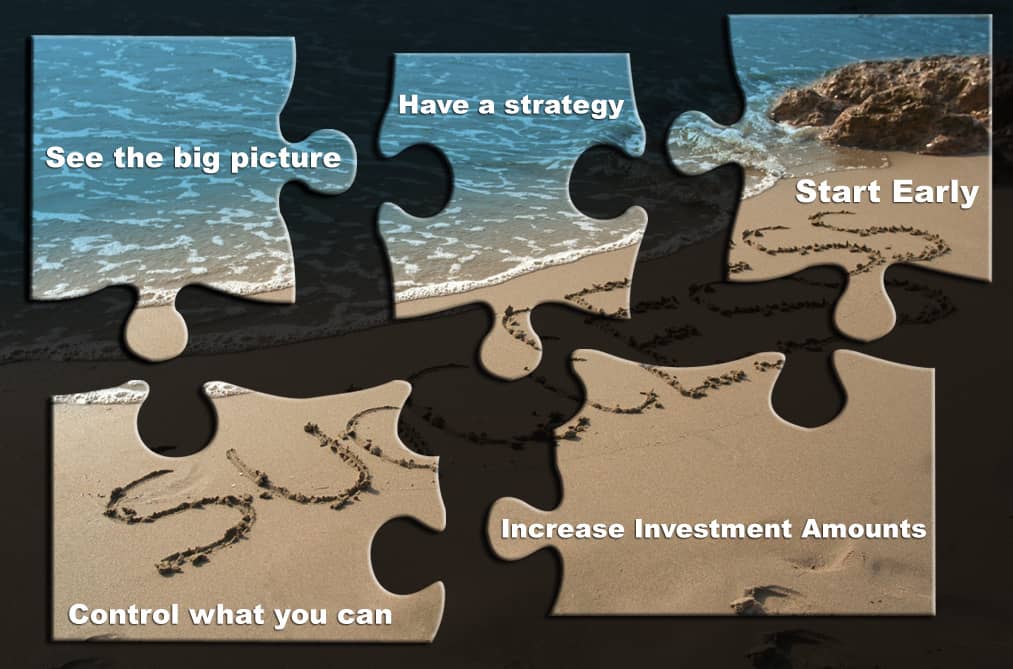Millennials have a tremendous advantage over their Baby Boomer parents because they are comfortable talking about money. Having grown up with social media and the internet, this generation is not as private as their parents and grandparents are, especially about subjects like money and finance. The advantage is that open conversations can reduce fears and increase understanding, which can result in better decision making.
Yet, with all this comfort in discussing financial matters, many Millennials are hesitant to meet with a financial advisor. It’s one thing to gather information from family and friends or read articles about investing, it’s another to discuss your personal information with a financial advisor. That’s when it moves from theoretical to personal and that can create a great deal of fear and discomfort.
Why Fear Gets the Best of Us
How Much Do You Really Know About Finances? As educated professionals, it’s common to feel like you should know everything. After all, if you don’t understand it, a few internet searches should provide the answers!
When it comes to money matters, though, many Millennials feel like a fish out of water. Internet searches can provide information that’s both confusing and conflicting, and that doesn’t answer individual questions about strategy and direction.
Then there is the question of what information can be trusted. Is the site legitimate and can the writer’s – and site’s – motivation be trusted? While financial information is plentiful, much of it’s either very general or coming from a sales site that promises a secret formula that will turn you into a millionaire.
Financial decisions by nature are very individual and personal. Because there’s no one-size-fits-all investing strategy, personal consultations are invaluable.
Advisor motivations. Can the advisor be trusted? A trusted advisor needs to understand your circumstances, goals, dreams, and aspirations. Once they do, they can help to create a long term strategy that will help to make those dreams a reality. But you must be able to trust that your advisor will make recommendations that are most beneficial to you, the client, not the best for them, the advisor.
Addressing these concerns in an open conversation will go a long way. No one wants to be sold a product. We all want to invest money in a sound strategy. Understanding the reasons for the recommendation will help you understand how it may benefit you and help you pursue your long term goals.
Fear of not being understood. As complicated individuals we want to appear like we have everything in order. In reality, sometimes we’re confident, other times not so much.
Financial advisors have seen nearly every level of financial preparedness. They have seen financial messes and worked with clients to get things corrected. They have seen strong portfolios, weak portfolios, no portfolio, and everything in between.
Even if you don’t feel you have all your ducks in a row, an advisor can help. If you’ve made bad decisions in the past, they can make recommendations for corrective action. If you’ve been unable to get things in order on your own, working with a professional can be the fastest way to get on track.
Markets not doing as expected. This can go two ways. If you invest conservatively and the market takes off you might end up kicking yourself for not being more aggressive. If the markets are slow and you invest aggressively you can end up wishing you’d been more conservative.
When you meet with an advisor, you’re meeting with a professional who understands the investment business and who can make recommendations that are consistent with your financial goals. An advisor does not have a crystal ball; remember that long term investing is not about beating the markets, it’s about making strong financial decisions that over time will lead to increased confidence in financial matters.
Pulling the Trigger
The first step is always the hardest. This is true whether you’re trying to establish a workout routine, learn a new language, start a new job, or change your investing strategy. Resisting change is natural and we are creatures of habit. However, there comes a point when, in order to grow and progress, we have to stop making excuses and get started by meeting with a financial advisor.
Make the appointment. Even if you don’t think you know enough, have enough money to invest, have a good enough paying job, or whatever the excuses for delays have been.
Before you meet with the advisor, write down questions you have. What things have you heard and what things do you want to understand. This can guide the conversation as you begin to develop a relationship with an advisor.
A financial advisor at Sherman Wealth is someone you’ll want to get to know! You’ll want them to know everything about you and your family’s needs. As your advisor learns more about you, they’ll be able to make the appropriate recommendations as opportunities arise.
Learn more about our Financial Advisor services.
Related Reading:
The Top 10 Questions to Ask a Financial Advisor
Transparency on Both Sides
LFS-1120931-021015












